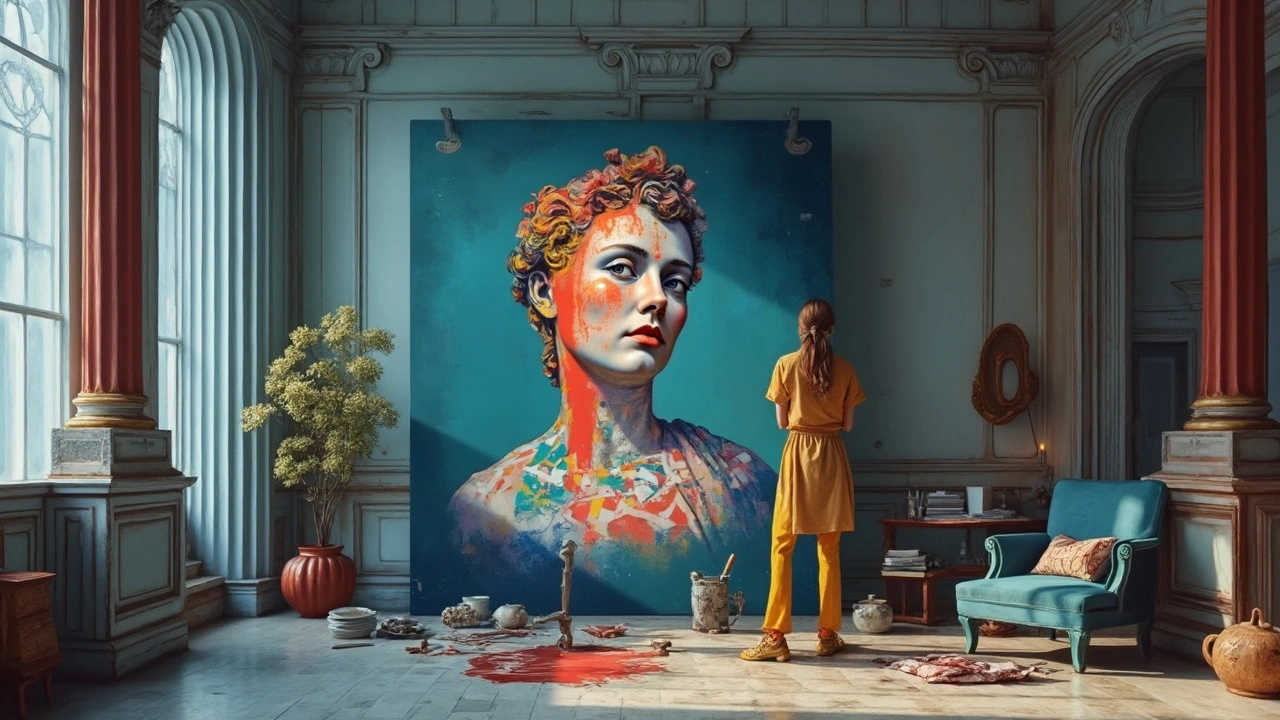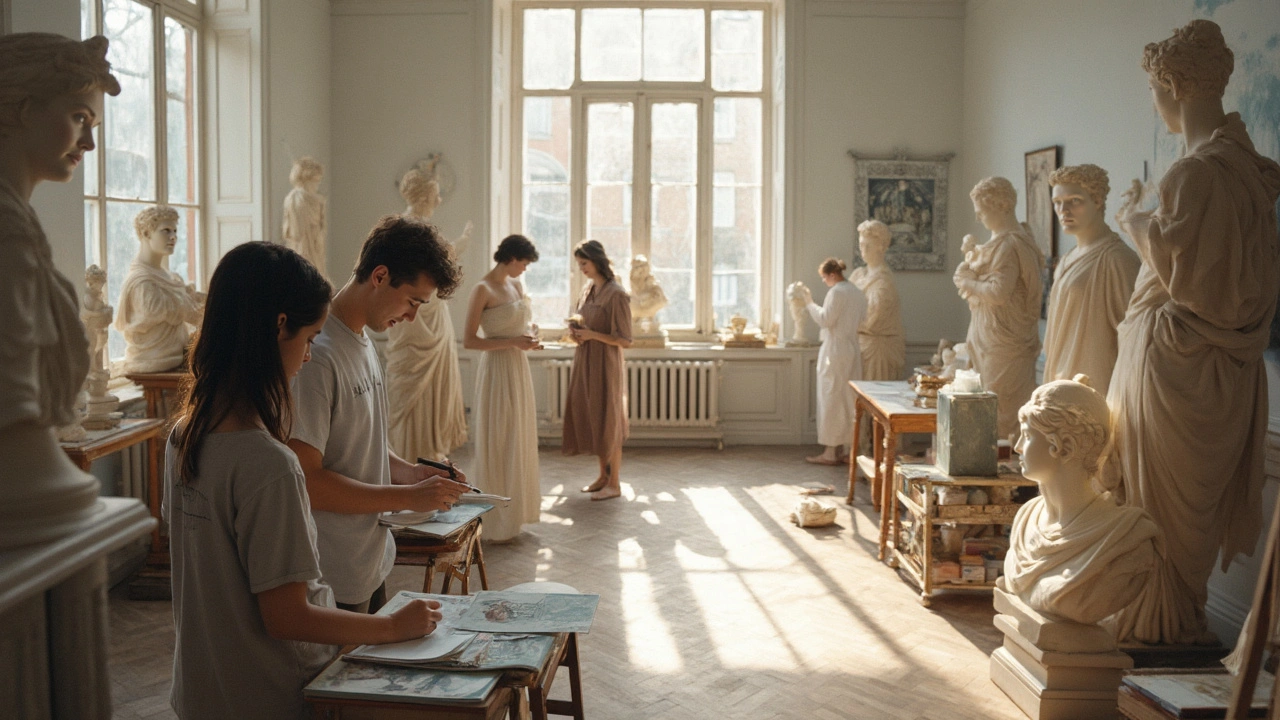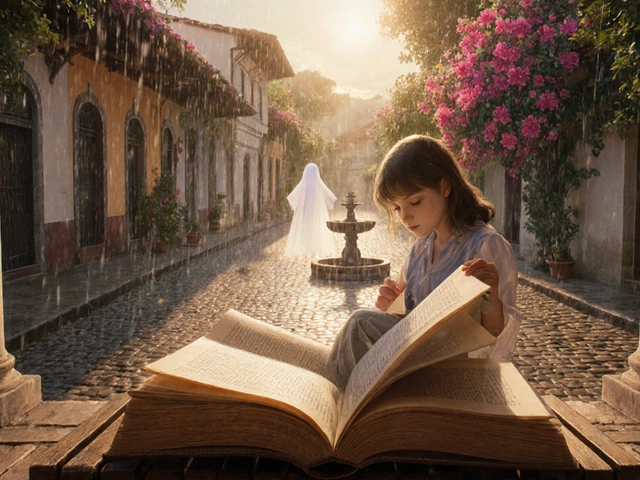Think neoclassicism is just dusty old statues and paintings? Actually, it’s sparking some of the coolest ideas in art right now. If you’re an artist or just someone who loves seeing fresh takes on classic things, you’ll notice neoclassicism is everywhere—sometimes in obvious ways, sometimes in subtle details that just ‘feel right’.
Take a look around art galleries or even your favorite brands’ social media. Clean lines, balanced shapes, and those steady, timeless vibes keep popping up. That’s the neoclassical influence right there, giving modern art a sense of order without making it boring or stiff. Artists today often reach for those time-tested features to tame chaotic modern times or just to bring a little extra punch to their work.
It’s not about copying the old masters note for note. It’s more about remixing: borrowing structure, a color palette, or a certain attitude and then flipping it to fit today’s mood. If you’re into making art, it’s actually pretty practical—when you hit a creative wall, starting with a simple neoclassical shape or layout can get your ideas flowing fast.
- What Makes Neoclassicism Stand Out?
- Modern Artists Reimagining the Classics
- Why the Old Rules Still Matter
- Tips to Bring Neoclassical Ideas Into Your Own Work
What Makes Neoclassicism Stand Out?
So what’s the big deal with neoclassicism anyway? The first thing people notice is its clear sense of order. Neoclassicism jumped off in the 18th century as a way for artists to break away from all the drama and over-the-top touches of baroque and rococo art. Instead, they dove into the calm, balanced, and timeless styles from ancient Greece and Rome.
One key point: lines and shapes aren’t just for show. Neoclassical artists used straight lines, calm geometry, and easy-to-understand compositions so anyone could ‘get’ the message at a glance. If you look at famous neoclassical works—think Jacques-Louis David’s "Oath of the Horatii"—it’s almost like the whole painting is built with invisible rulers and grids.
Color plays a part, too. Neoclassical artists stuck with steady, muted shades: whites, greys, classic reds, and soft earth tones. No wild color bombs—just choices that help the whole piece feel solid and thought-out. This color thinking is still a thing for lots of modern artists who want their stuff to feel reliable and clean.
Neoclassicism is big on structure and meaning, but it’s also obsessed with perfect bodies and faces. Artists weren’t just chasing beauty—they were sending signals: order, intelligence, and heroism (which explains all those toga-clad figures and strong chins).
- Symmetry: Everything is balanced, left and right—makes the work feel stable.
- Harmony: No random details; every part of the painting or sculpture works together smoothly.
- Clarity: Scenes and subjects are easy to read, with no messy distractions.
Here’s a quick look at how those basics stacked up compared to other styles, just to see where neoclassicism really stands out:
| Style | Main Focus | Color Use | Typical Mood |
|---|---|---|---|
| Neoclassicism | Order, clarity | Muted, classic | Steady, heroic |
| Romanticism | Drama, emotion | Vivid, wild | Energetic, moody |
| Baroque | Movement, detail | Rich, dark | Intense, grand |
So, when you see a modern artist using crisp lines, smooth blocks of color, or a layout that just ‘makes sense,’ there’s a good chance they’re pulling from that classic neoclassical playbook—even if their work looks totally new.
Modern Artists Reimagining the Classics
Some folks might think neoclassicism is just for museums, but the truth? Modern artists are flipping those classic ideas in all sorts of bold ways. For example, look at Kehinde Wiley. He’s famous for painting ordinary people in legendary poses borrowed straight out of old-school masterpieces. Instead of ancient Roman emperors, you get everyday faces—sharp suits, street styles—framed with all that dramatic flair. It’s a total remix, giving classic composition a fresh story.
An even bigger twist comes from artists like Rachel Whiteread. She turns regular objects—like chairs or houses—into sculptures that play with space and form. Her pieces grab the clean lines and symmetry you see in ancient temples, but she turns them totally modern with her choice of materials. She’s showing it’s not about marble and grand halls—it’s about the vibe those forms give off.
And let’s not skip digital art. Take the Instagram sensations who use neoclassical statues as a base, then add pop colors and video game touches. Designers like Chad Knight turn computer-generated busts into surreal, animated artwork, putting classical art right into our TikTok feeds. That’s modern art inspired by the classics, shaking up how we see both the old and the new.
If you want a sense of how much this trend is catching on, check out these numbers from a 2024 survey of young artists:
| Style Referenced | Percentage of Artists |
|---|---|
| Neoclassicism | 38% |
| Abstract | 25% |
| Pop Art | 22% |
So, when people say classic inspiration is played out, just show them how wildly creative today’s artists get by borrowing from the past. There’s no rulebook for mixing neoclassicism with modern trends—you pick what works and run with it.

Why the Old Rules Still Matter
Here’s the thing—those classic neoclassicism guidelines aren’t just leftovers from art history class. Stuff like symmetry, proportion, and balance still matter big time for modern artists. When people look at art, their brains actually like things that feel steady and well-planned. That’s straight out of the neoclassical playbook.
Back in the day, artists followed gold standards like the “Golden Ratio” to create eye-catching paintings and sculptures. Today, some of the most viral photos and ad campaigns use exactly the same basic idea without even calling it by name. Apple’s product shots? Structured like Roman architecture. Movie posters for major blockbusters? Balanced and centered, right out of a classical art catalog.
"Neoclassicism reminds artists that order and beauty aren’t old-fashioned—they’re powerful tools. Stability and clarity never go out of style." — Agnes Gund, President Emerita of MoMA
There’s another big upside: these old-school tricks actually help when you’re blocked. If your work feels messy or something’s off, going back to these rules gives you a quick fix. It also makes your art more relatable. Humans naturally connect with symmetry and easy-to-read shapes, according to a study from the MIT Department of Brain and Cognitive Sciences.
Look at this comparison of design elements often borrowed from neoclassical styles by modern artists:
| Neoclassical Rule | Modern Art Example |
|---|---|
| Symmetry | Instagram grids, logo designs |
| Proportion (Golden Ratio) | Product packaging, magazine layouts |
| Harmony of Color | Brand identity palettes, gallery installations |
At the end of the day, these old rules make sure your work doesn’t just grab a quick glance—it keeps people staring and enjoying, just like great art always has.
Tips to Bring Neoclassical Ideas Into Your Own Work
Want to channel some neoclassicism into your next project? You don’t have to sculpt like Michelangelo or paint like David to make it happen. Modern artists keep it simple and smart. Here’s how you can too:
- Start with symmetry. Neoclassical art is famous for its balance. If your work looks a little off, try making each side more even. Split your canvas or design in half and mirror one side for a calm, organized vibe.
- Use a limited color palette. Artists like Jacques-Louis David kept their colors muted—lots of white, grey, and just a few main colors. This helps your subject stand out and keeps things clear. Grab three or four colors that work together and stick to them.
- Add some architectural elements. Columns, arches, and crisp geometric shapes scream neoclassical. Quick tip: Draw a simple arch in the background or frame your main subject with square lines and you’re halfway there.
- Focus on clear storytelling. Neoclassical works didn’t get lost in details. Their stories were front and center. What’s your main message? Keep backgrounds simple and make sure your subject is the boss of your image.
- Work with classical poses. Try using strong, steady postures—the stuff you see in old statues. These stances add quiet drama and make even a modern subject look powerful.
Fun fact: a 2022 study by ArtNet found that modern art pieces inspired by neoclassical styles sold 18% faster than other contemporary works. Audiences still respond to that clear structure and timeless look. If you want your art to connect, this is a solid place to start.
Last tip—don’t stress perfection. The top artists playing with neoclassicism today break the rules all the time. Take what works, tweak it, and let your own style shine through. Sometimes that mix of old-school and new-school is exactly what grabs attention.




